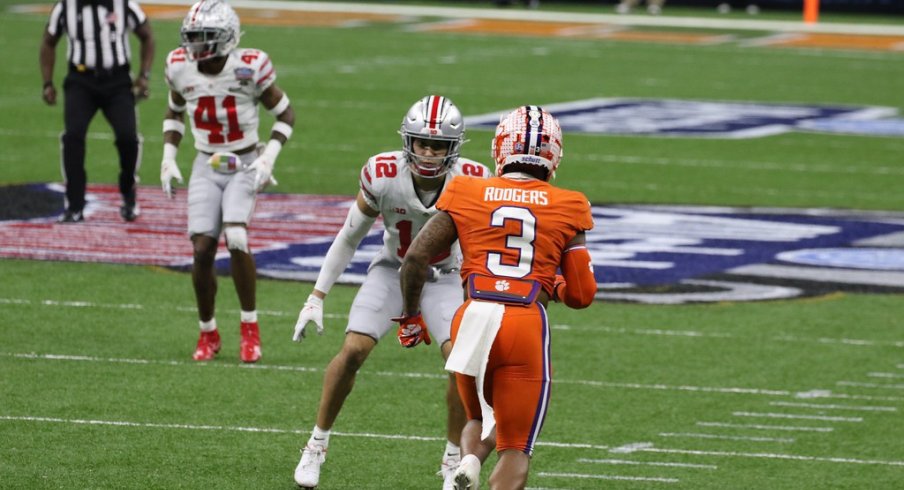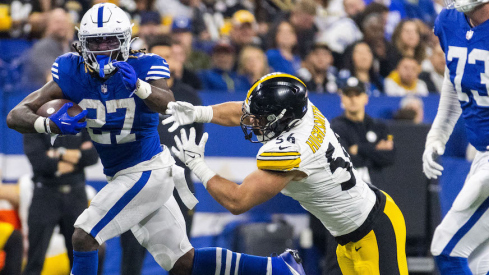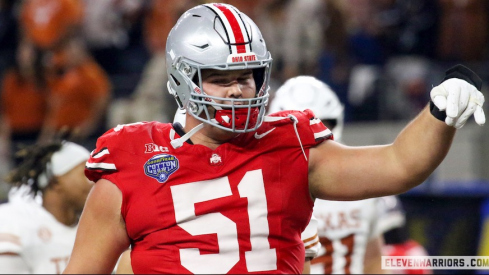Four-star 2026 cornerback Jordan Thomas commits to Ohio State.
I have a confession.
As I read the observations of 11W's Dan Hope after he and the rest of the OSU media were granted access to an Ohio State practice for just the second time in a calendar year, I found myself daydreaming. Here is Kerry Coombs, now in full command of the Buckeye defense, changing its shape from the year prior to a 4-2-5; addressing the weaknesses of a unit that seemed lost when defending the pass.
Oh, the possibilities...
Maybe this signals the return of Chris Ash's Quarters system, the one in which the Buckeyes lined up with two deep safeties and won a national title with Kerry Coombs coaching the cornerbacks. Perhaps it means something more exotic, such as the simulated pressure packages Coombs ran while with the Tennessee Titans.
The need for OSU to make changes to last year's approach is well-chronicled, yet the defensive coordinator told the media at the beginning of spring practice that Man-Free coverage “is our fastball. That's what we've gotta be able to do. ... Everything else bleeds off of that.” Translation: not much is changing from a schematic standpoint this upcoming season.
Regardless of whether the team trotted out three supposed cornerbacks or four linebackers over the past two seasons, the team often still played just the same two coverages: Man-Free (Cover 1) or Three-deep 'vision & break' zone (Cover 3).
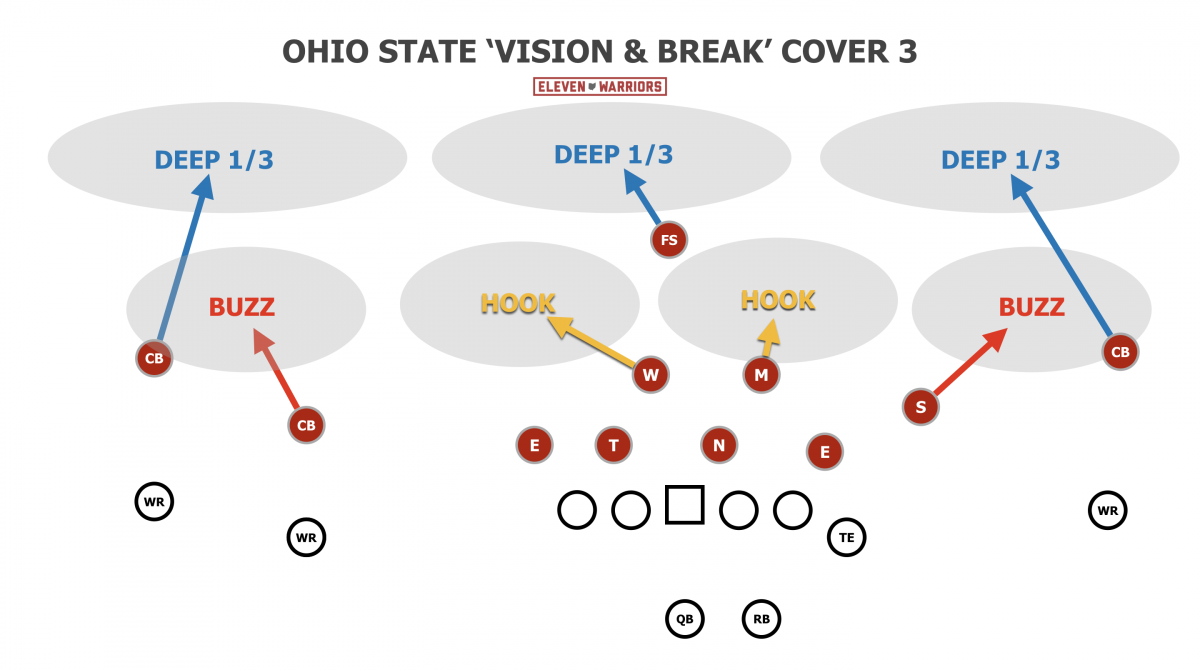
While Cover 1 is straightforward (everyone covers their guy while the free safety plays centerfield and reads the eyes of the QB), the Buckeyes' favorite zone scheme isn't that much more complicated. There are three deep zones and four underneath. The two interior zones are the "hook" players while the "buzz" players cover the underneath zones outside the hashes (often called curl/flat).
If a team lined up with two backs and two tight ends (i.e. Wisconsin), the Buckeyes played with four linebackers, with each manning an underneath zone. If an opponent played with four wide receivers and no tight end (such as one down in the second half looking to throw on every play), the Buckeyes would replace the outside linebackers with defensive backs, creating the same 4-2-5 look we expect from what was shown to the media last week.
As the system has shown since Jeff Hafley installed it, who mans each individual zone can easily change on the fly, allowing the defense to mix and match personnel as needed.
For much of the past two seasons, the team lined up in this same look with the free safety sitting in the middle of the field. The two "buzz" players were the spots with the most change, however.
Shaun Wade moved from the buzz role over the slot receiver in 2019 to an outside cornerback spot in 2020, replaced there by Marcus Williamson. On the other side, a true linebacker – first Pete Werner in 2019, then a rotation of Baron Browning and Justin Hilliard in 2020 – manned the buzz zone over the tight end.
This fall, Williamson returns for his fifth and final season, likely manning that same slot position as he did in 2020. But at 6-foot-1 and 200 pounds, Lathan Ransom seems poised to see the field as he brings enough size to be a factor in the run game while also capable of covering tight ends, and giving the Buckeyes five defensive backs on the field at once.
In the CFP semifinal against Clemson, we may have gotten a peek at what Coombs has in mind for the coming fall as he often played with five DBs, removing the SAM linebacker in place of Ransom, who saw the field for a career-high 28 snaps that night.
“He's just continued to improve every day,” Coombs said after Ransom's performance that night in New Orleans. “I think we all felt like he was doing a really good job in practice. But as you know, that's different than the game. So he showed up and played big when we needed him to, and he continues to improve and develop, and we're excited for his future.”
With Ransom lined up in the slot, Williamson and Proctor changed the way they lined up as well. No longer was the free safety, Proctor, simply mirroring the QB's movement, as he and Williamson both lined up deep. Upon the snap, Coombs mixed and matched who played free safety, and who dropped into which underneath zone in hopes of confusing Trevor Lawrence just long enough to let the pass rush get to the star QB.
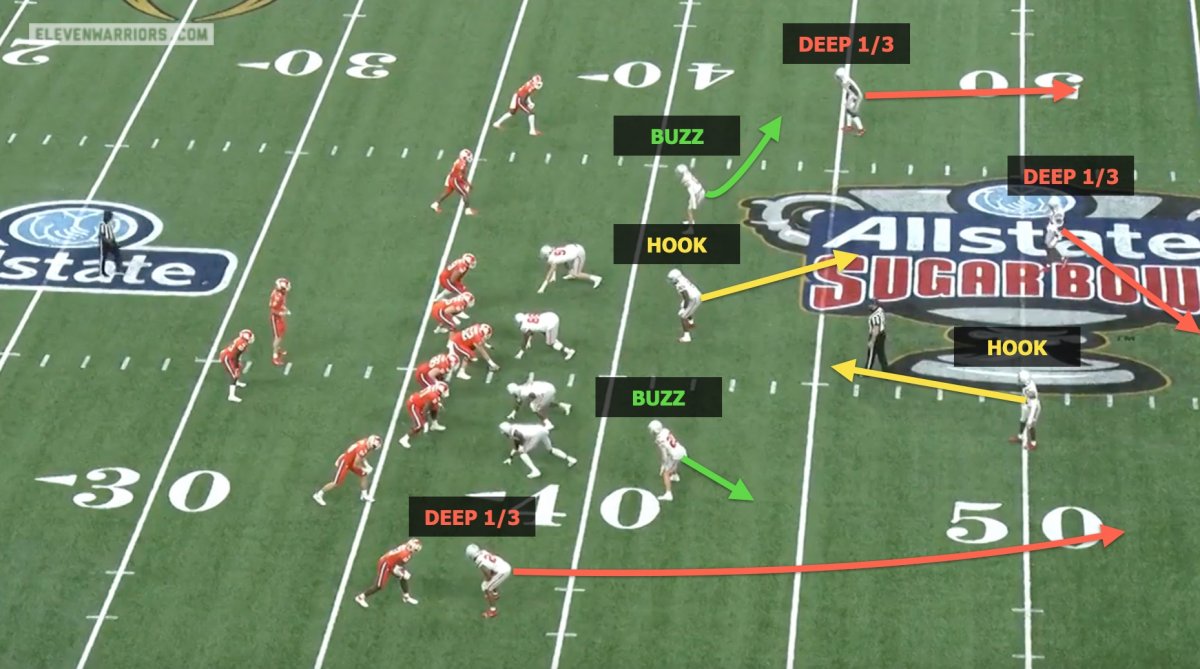
Based on a tweet from Buckeye great and ESPN analyst Joey Galloway, who attended a recent spring practice, it appears that Coombs is duplicating this same look as he prepares for the 2021 season. Though Williamson and corners Sevyn Banks and Cameron Brown are sitting out the spring, we see their backups lined up in the same positions.
Proctor and Craig Young man the deep safety spots while Ransom sits pressed up over the strong slot. Meanwhile, Lejond Cavazos and Ronnie Hickman man the corners with the latter rolled up tight on the lone receiver to the weak side.
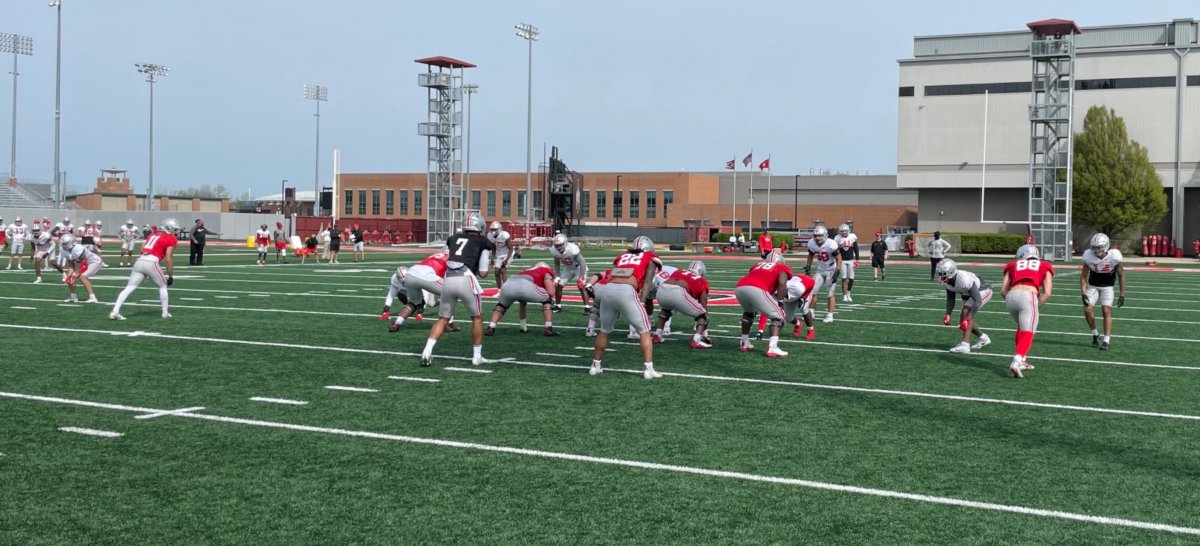
But Coombs also dropped a few other bread crumbs in that Sugar Bowl victory over the Tigers.
As we know, the system is ultimately derived from Pete Carroll's playbook with the Seattle Seahawks, who have leaned heavily on the same Cover 1 and Cover 3 schemes for over a decade. In the NFL, however, defenses have to have more than just two coverages in their repertoire, and Coombs appears to have borrowed one of Carroll's best change-ups.
One of the best ways to attack a single-high defense like the Buckeyes' and Seahawks' is from the slot, as the defender lined up there is often not as strong in man-coverage as the outside cornerbacks. This was exactly the philosophy seen from Clemson, as their top receiver, Amari Rodgers, spent much of that evening lined up in the slot, rather than outside.
Instead of simply asking Williamson or Ransom to try and follow the All-ACC receiver in man-coverage on every play, Coombs threw out a wrinkle: Carroll's Reno coverage.
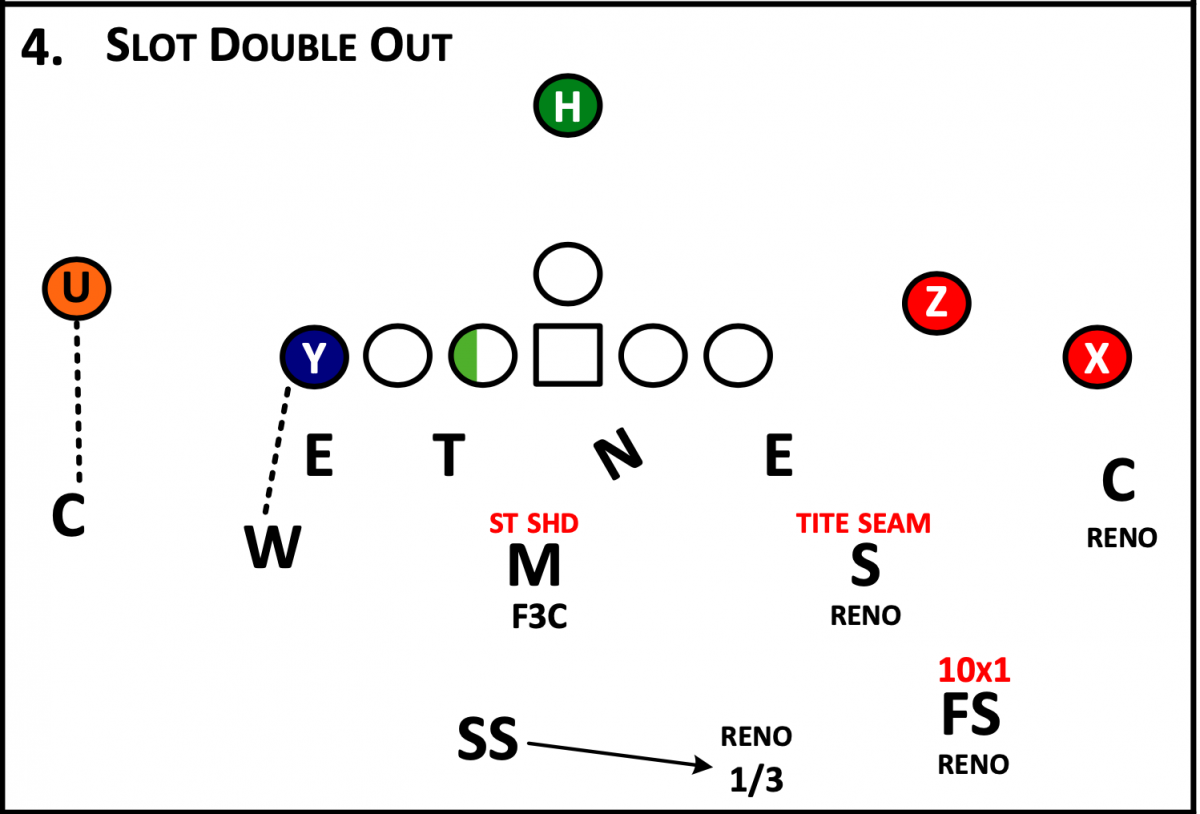
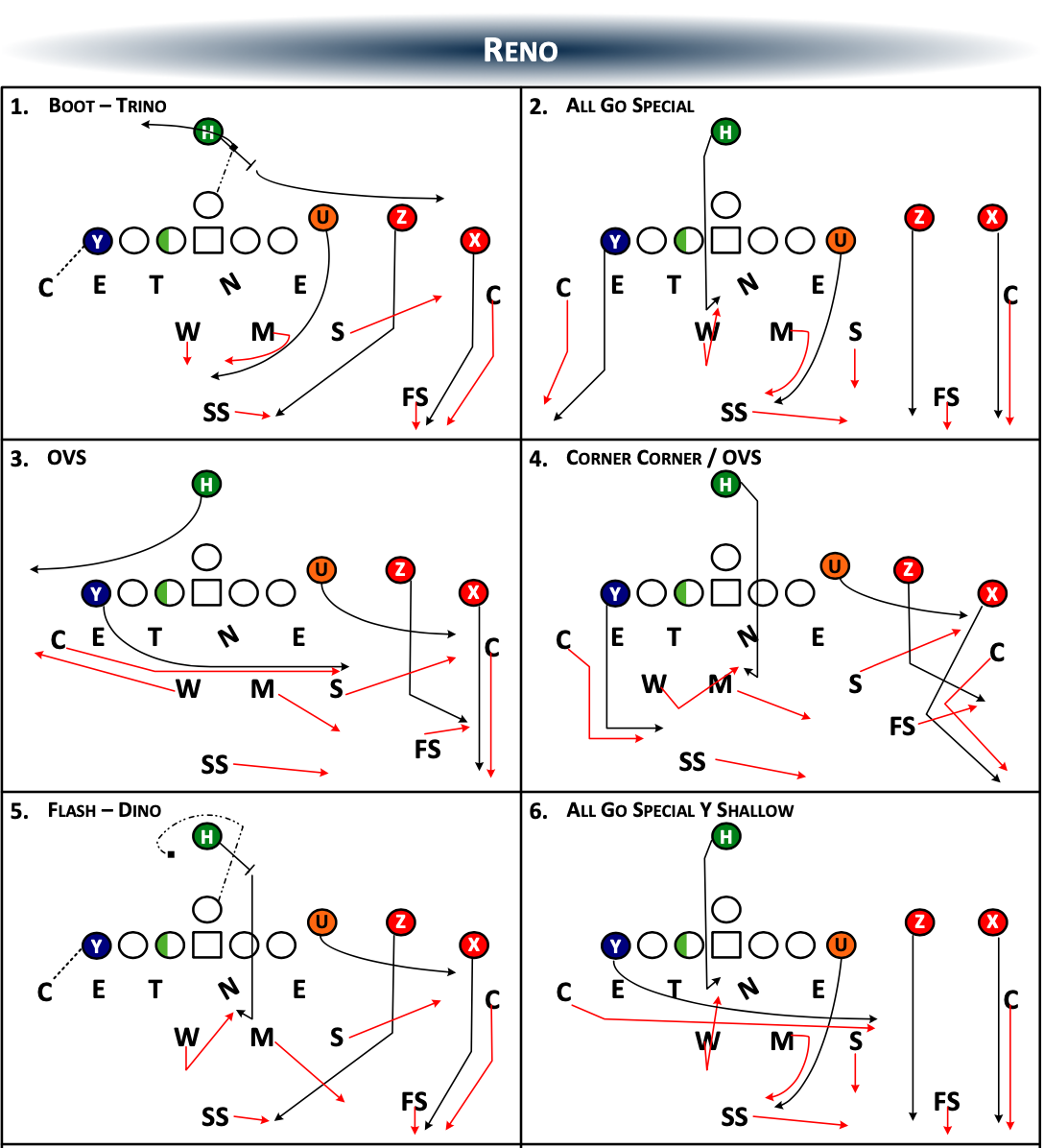
To the untrained eye, it simply looks like Cover 1 with one safety playing man-coverage on the slot receiver while the other plays a deep zone in centerfield. But in reality, the three defenders to one side (the corner, safety, and slot) are playing match coverage, reading the routes of the two receivers, and trading them if necessary to ensure the defense is never put in a bad spot.
If the outside receiver releases downfield, the corner locks on in man-coverage. Meanwhile, the free safety opens up to this side of the field and looks for any routes that break toward the middle, rather than simply reading the eyes of the quarterback.
On the opposite side, the defenders simply man up on their assigned receivers, but playing a bit looser, as they know they won't be getting any help from the free safety.
Against Lawrence and the Tigers, this coverage proved quite effective. In the example below, the star signal-caller had nowhere to go with the ball, despite seeming to have a mismatch with Rodgers lined up across from Proctor in the slot. But as the ball is snapped, Williamson hedges over to that side, forcing Lawrence to lob a duck to the well-covered outside receiver, resulting in an incompletion.
That wasn't the only wrinkle we saw that night, either. Late in the game, as the Tigers threw the ball downfield on nearly every play, the Buckeyes trotted out a Quarters coverage reminiscent of Ash's system in 2014. Instead of a three-deep, four-under zone like the Cover 3 scheme, this is a four-deep, three-under look with the safeties helping take away any deep routes between the numbers.
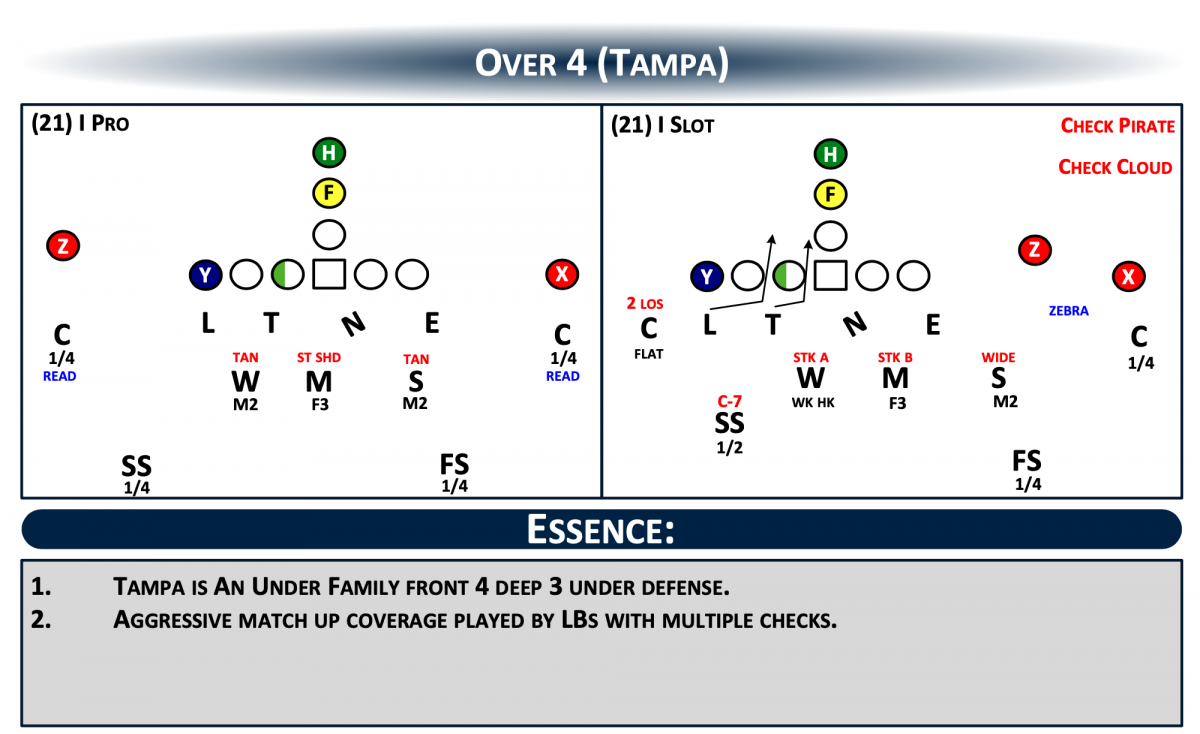
Yet again, this wrinkle wasn't by accident, as it is another that can be found in Carroll's Seahawk playbook. Disguising a single-high defense by lining up with two deep safeties only works if those safeties both drop into deep zones on occasion, and this Quarters (Cover 4) look is one of the best ways to take away explosive plays downfield.
With the Buckeyes expected to feature a fearsome pass rush led by Haskell Garrett, Tyreke Smith, and Zach Harrison this fall, Coombs can lean on more conservative coverages like these two-deep looks. It's unlikely that a Big Ten quarterback will have the time to find a receiver downfield before the pocket collapses, just as it was for the top pick in the upcoming NFL draft.
Many questions still remain about this change in personnel, however. Most notably, how this 4-2-5 look will do against the run.
With Ransom lined up outside the box on most snaps, the Buckeyes will be short a defender to fill run gaps, with Proctor and Williamson the most likely candidates to fill that role. But in the modern game, stopping the run should not be the primary concern, as it seemingly was in 2019 and 2019 for Ohio State.
As Coombs enjoys his first full spring as the Buckeyes' defensive coordinator, there is plenty of time to work on such issues. While he's not throwing out the system that saw his team finish with one of the worst pass defenses in America, it's clear that he has some changes in mind, starting with not only who, but what kind of players, make up his best 11.
